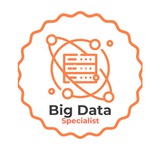CHOOSING THE RIGHT DATA ANALYTICS TOOLS
With so many data analytics tools available,
how do you pick the right one?
The truth is—there’s no one-size-fits-all answer.
The best tool depends on your needs, your data, and your goals.
Here’s how to decide:
🔹 For Data Exploration & Cleaning → SQL, Python (Pandas), Excel
🔹 For Dashboarding & Reporting → Tableau, Power BI, Looker
🔹 For Big Data Processing → Spark, Snowflake, Google BigQuery
🔹 For Statistical Analysis → R, Python (Statsmodels, SciPy)
🔹 For Machine Learning → Python (Scikit-learn, TensorFlow)
Ask yourself:
✅ What type of data am I working with?
✅ Do I need interactive dashboards?
✅ Is coding necessary, or do I need a no-code tool?
✅ What does my team/stakeholder prefer?
The best tool is the one that helps you solve problems efficiently.
With so many data analytics tools available,
how do you pick the right one?
The truth is—there’s no one-size-fits-all answer.
The best tool depends on your needs, your data, and your goals.
Here’s how to decide:
🔹 For Data Exploration & Cleaning → SQL, Python (Pandas), Excel
🔹 For Dashboarding & Reporting → Tableau, Power BI, Looker
🔹 For Big Data Processing → Spark, Snowflake, Google BigQuery
🔹 For Statistical Analysis → R, Python (Statsmodels, SciPy)
🔹 For Machine Learning → Python (Scikit-learn, TensorFlow)
Ask yourself:
✅ What type of data am I working with?
✅ Do I need interactive dashboards?
✅ Is coding necessary, or do I need a no-code tool?
✅ What does my team/stakeholder prefer?
The best tool is the one that helps you solve problems efficiently.
